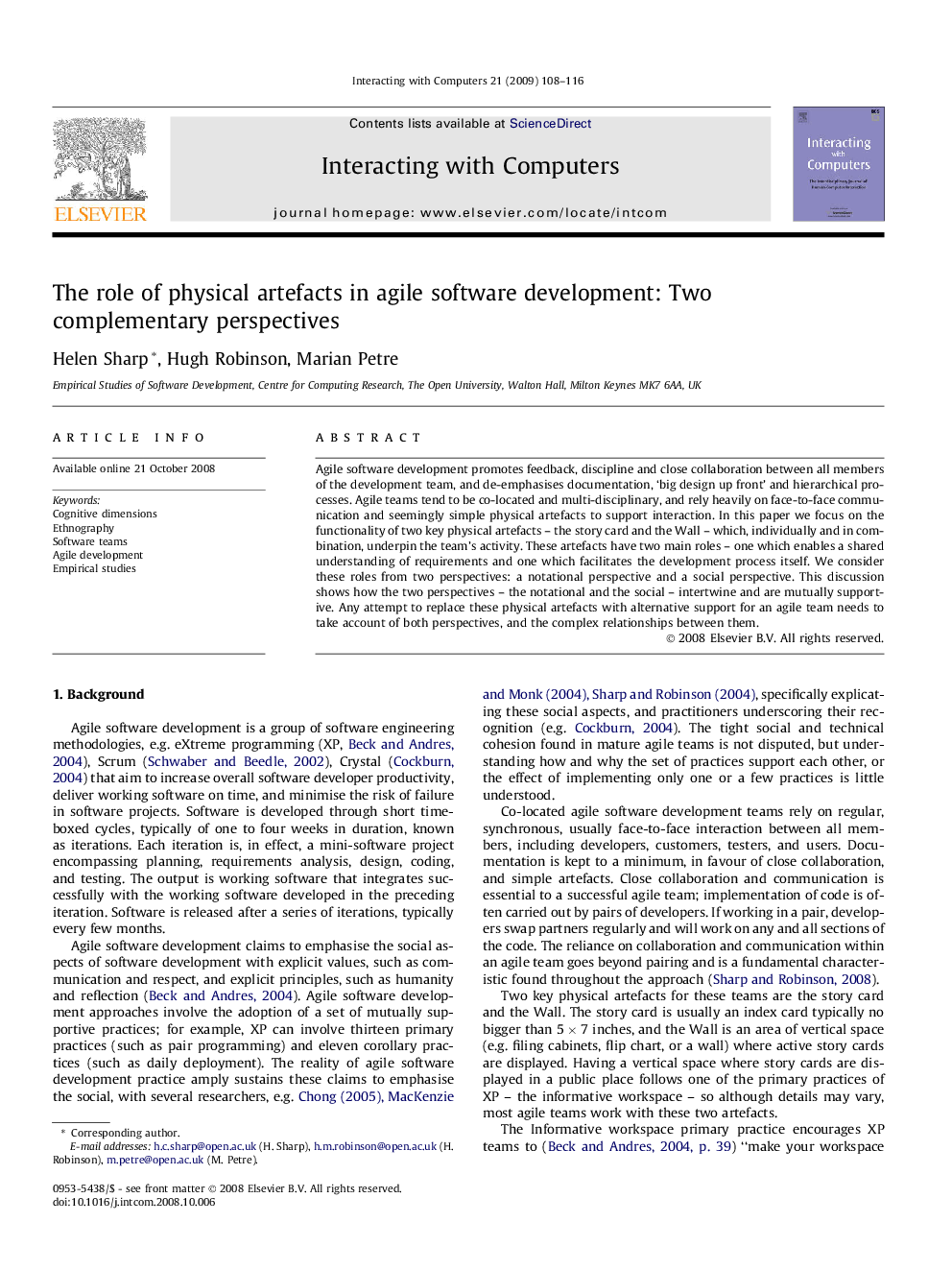| کد مقاله | کد نشریه | سال انتشار | مقاله انگلیسی | نسخه تمام متن |
|---|---|---|---|---|
| 550926 | 1450792 | 2009 | 9 صفحه PDF | دانلود رایگان |

Agile software development promotes feedback, discipline and close collaboration between all members of the development team, and de-emphasises documentation, ‘big design up front’ and hierarchical processes. Agile teams tend to be co-located and multi-disciplinary, and rely heavily on face-to-face communication and seemingly simple physical artefacts to support interaction. In this paper we focus on the functionality of two key physical artefacts – the story card and the Wall – which, individually and in combination, underpin the team’s activity. These artefacts have two main roles – one which enables a shared understanding of requirements and one which facilitates the development process itself. We consider these roles from two perspectives: a notational perspective and a social perspective. This discussion shows how the two perspectives – the notational and the social – intertwine and are mutually supportive. Any attempt to replace these physical artefacts with alternative support for an agile team needs to take account of both perspectives, and the complex relationships between them.
Journal: Interacting with Computers - Volume 21, Issues 1–2, January 2009, Pages 108–116